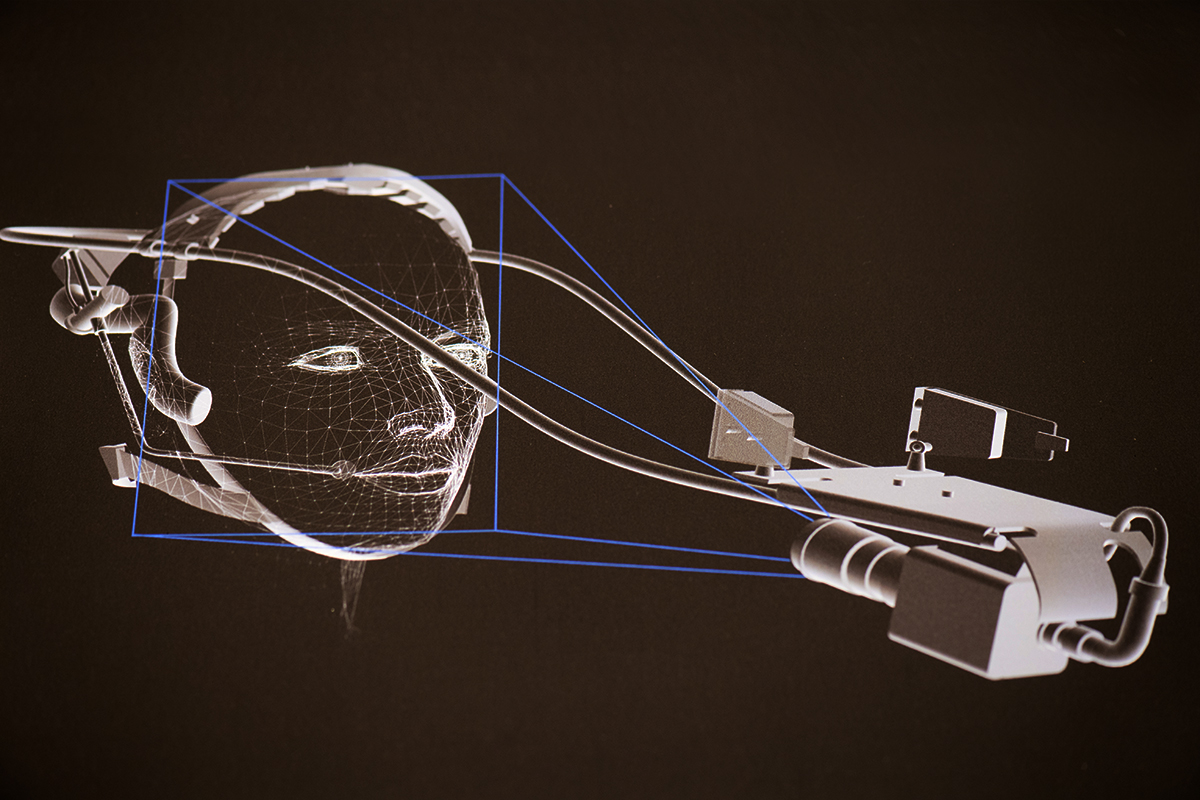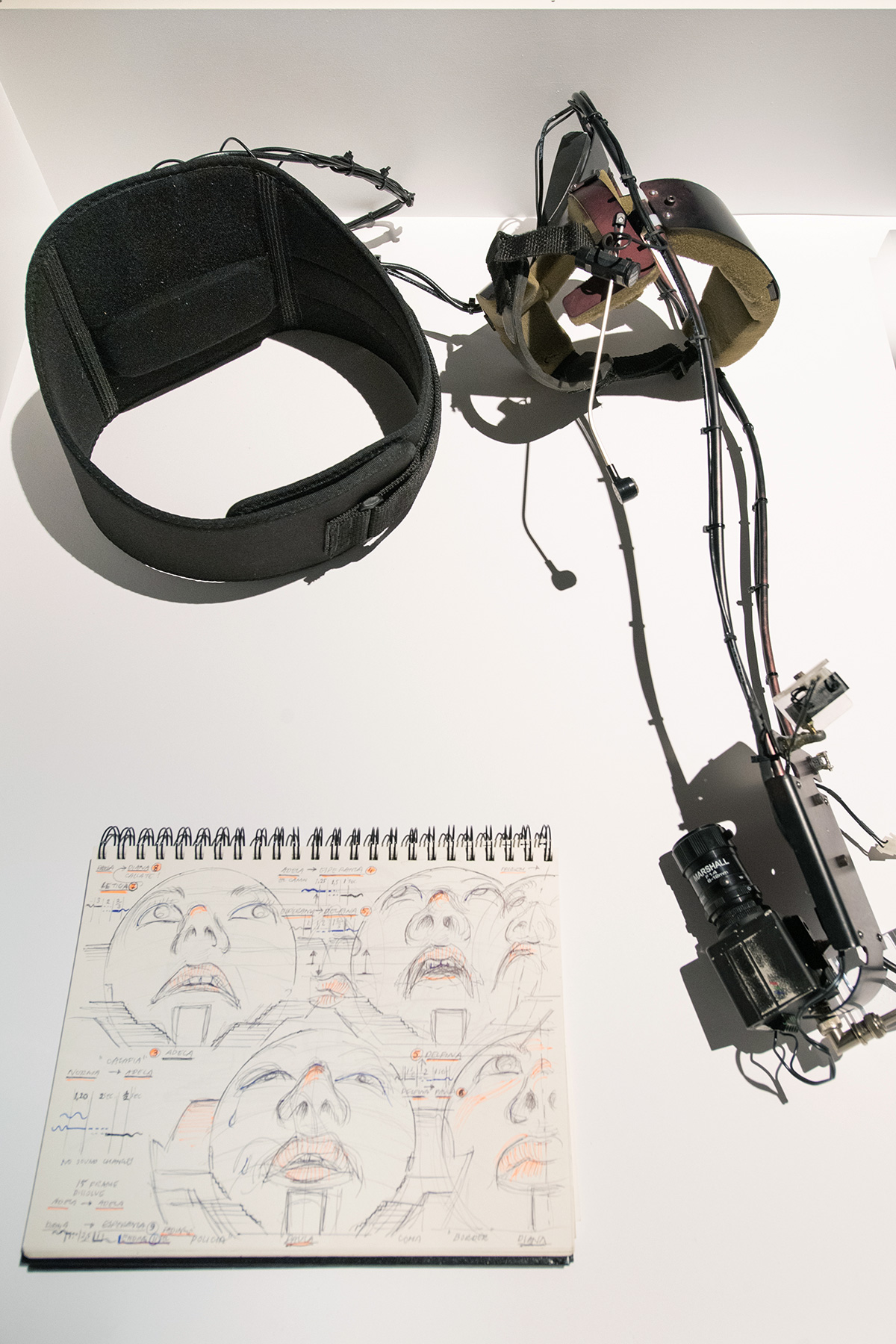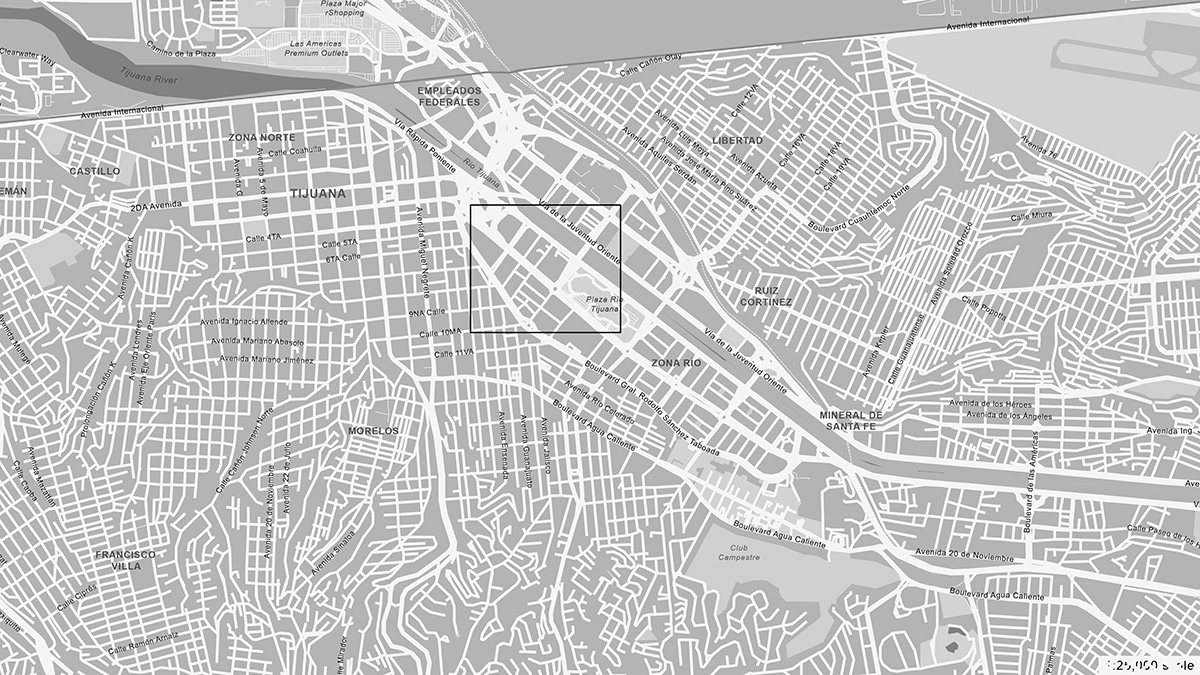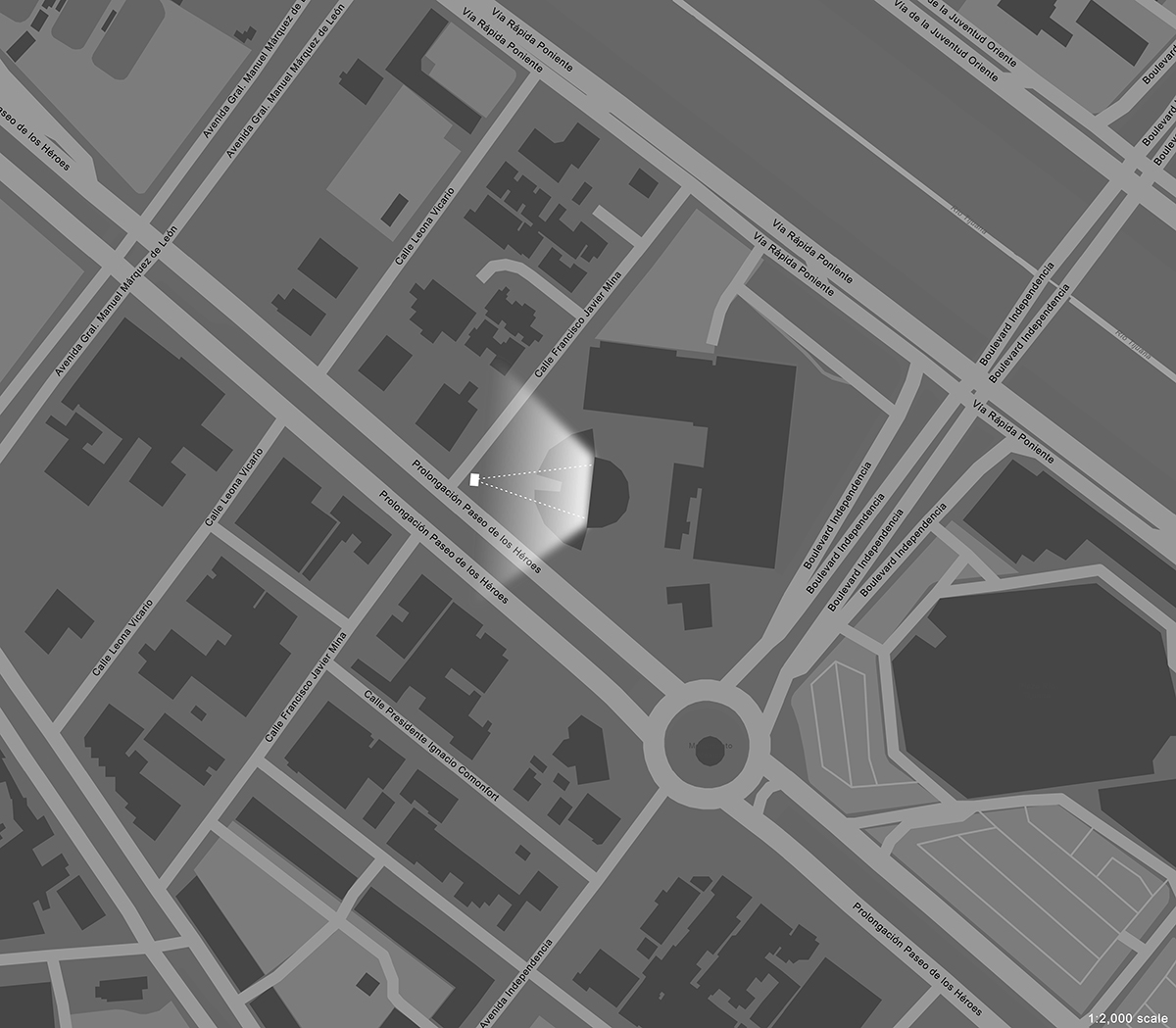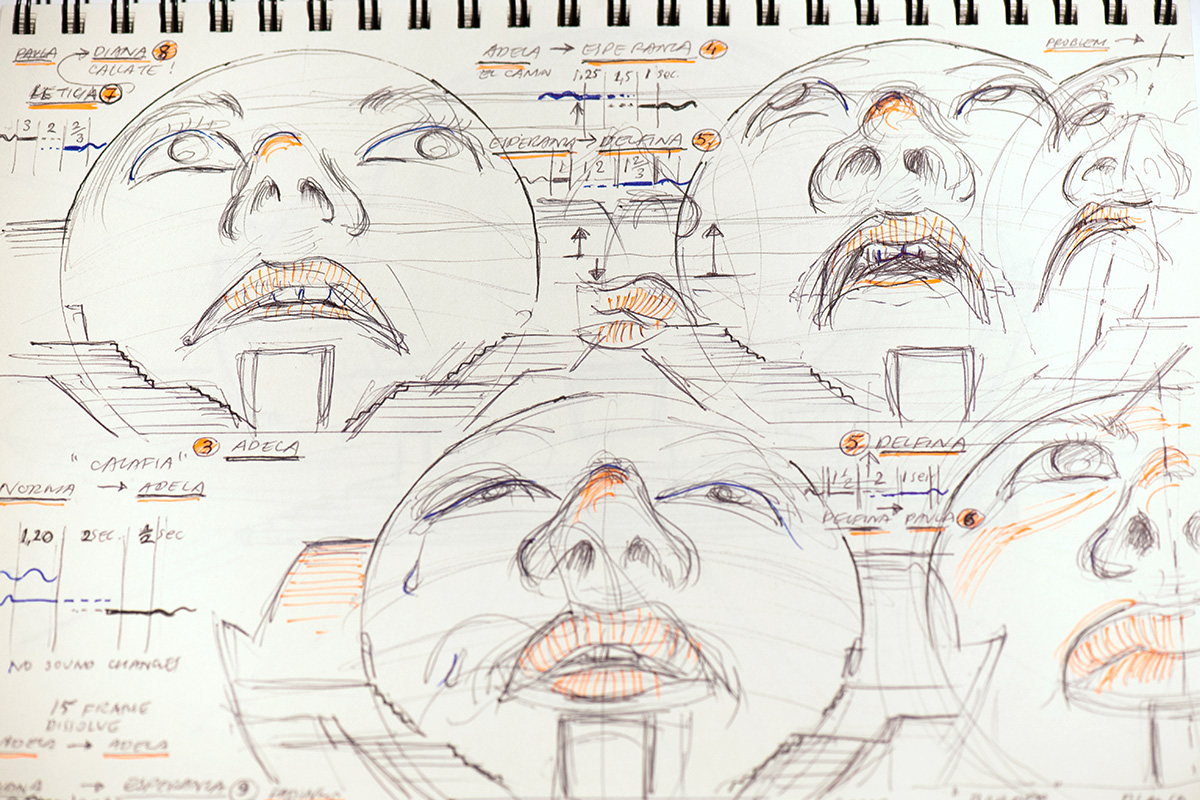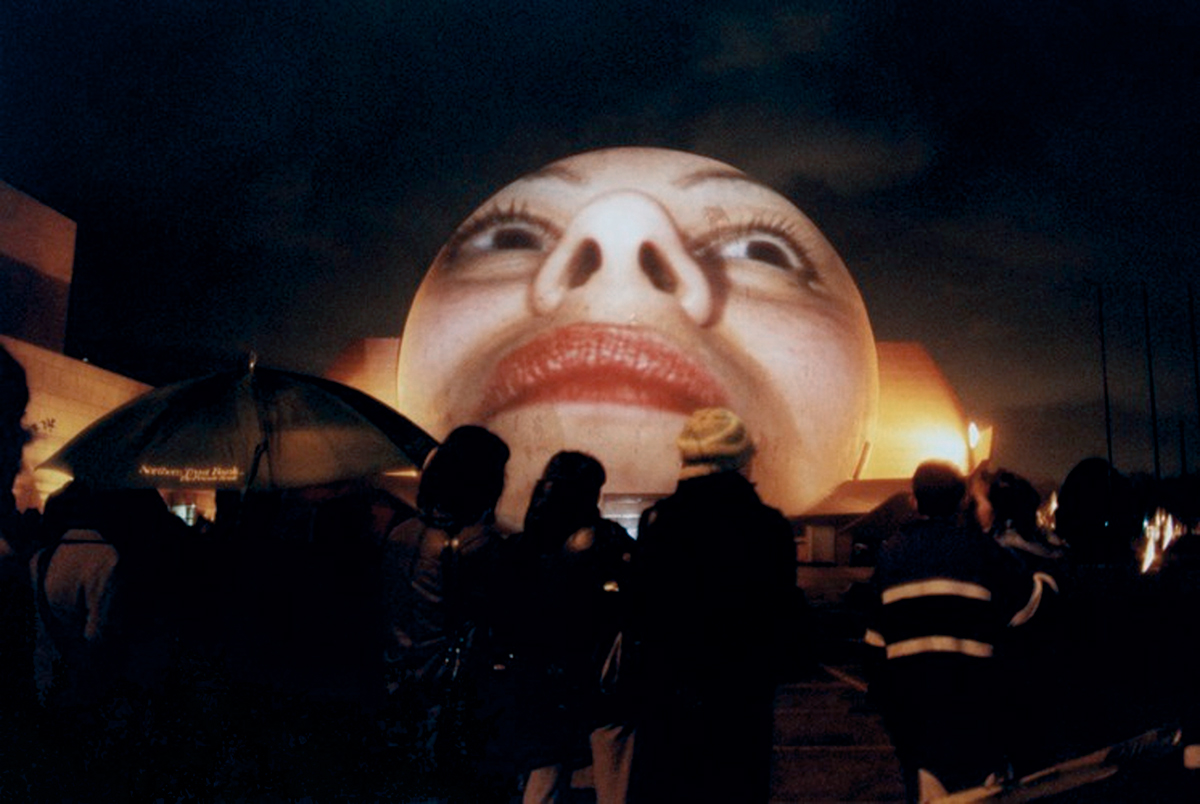Interrogative Design: Selected Works of Krzysztof Wodiczko – El Centro Cultural Projection
For the duration of the Interrogative Design exhibition, we will be providing expanded online content to give viewers a deeper access to selected projects. Materials for this exhibit provided by the artist, with unique edits specially produced for this project by GSD Exhibitions.
El Centro Cultural Projection (Part II), 2001, Tijuana, Mexico
• Paseo de los Héroes 9350, Zona Urbana Rio Tijuana, 22010 Tijuana, B.C., Mexico
• Run Dates: February 23–24, 2001
The site of this projection was the Tijuana Cultural Center (CECUT) and, in particular, one of the city’s architectural symbols: its huge, spherical, Omnimax movie theater. The Cultural Center comprises theaters, museums, galleries, and restaurants, but the Omnimax theater, opened in 1982, is the central location of CECUT and accommodates more than one million visitors per year.
This is the only site that Wodiczko has visited twice to create two unique interventions on the same architecture. The first occurred in 1988 as a slide projection of a still color image of a man’s hands behind his head, as if being arrested or searched, and was organized by El Centro Cultural Tijuana in conjunction with the artist’s solo exhibition at the La Jolla Museum of Contemporary Art, curated by Madeleine Grynsztejn.
For the second intervention, in 2001, the artist confronted the specific social conditions of this area, namely the Mexico-U.S. border and the middle of the maquiladora belt, a border-adjacent concentration of manufacturing and assembly plants run by international corporations using low-cost Mexican labor. Wodiczko worked with a group of Mexican women who spoke about their often-traumatic experiences, like sexual harassment at the workplace, domestic violence, family disintegration, and police brutality. The pre-recorded statements were both interrupted and rounded out live in response to viewer reactions as the pre-recorded participants took part in the live projection for the first time in Wodiczko’s practice. Their faces were projection-mapped onto the spherical shape of the Omnimax using a specially calibrated, head-mounted device composed of a camera, a microphone, and a portable transmitter. Blown-up to huge dimensions, the “live” faces and amplified voices of six women, speaking of issues that had, until then, been mostly taboo, meant the projection spectacularly claimed the city’s public space and allowed the women’s private testimonials to become a live public action.
During his year-long preparations for the project, the artist worked with Factor X and Yeuani, local organizations that support women. This projection was organized as the final event of InSite 2000, the Border Art Festival of San Diego and Tijuana, and co-curated by Michael Krichman and Carmen Cuenca.
